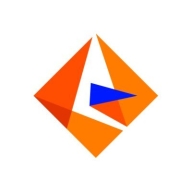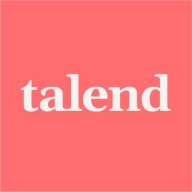

Informatica PowerCenter and Talend Open Studio compete in the data integration tools category. Informatica PowerCenter seems to have the upper hand in enterprise settings due to its comprehensive features and scalability.
Features: Informatica PowerCenter offers robust error handling, powerful debugging tools, and transformation capabilities. Its scalability, security, and performance are key for enterprise-wide data integration. Talend Open Studio is known for its flexibility and user-friendly drag-and-drop interface, with an extensive range of connectors and prebuilt components.
Room for Improvement: Informatica PowerCenter's high cost and complex UI are noted drawbacks, with calls for better big data connectivity and a modernized interface. Talend Open Studio could improve in optimizing resource use and providing better documentation and support services. Users also seek extended capabilities in the open-source version.
Ease of Deployment and Customer Service: Informatica PowerCenter typically deploys on-premises and is praised for its robust technical support. Talend Open Studio supports flexible deployment options, including cloud-based environments, with reviews indicating generally positive but occasionally slow customer support.
Pricing and ROI: Informatica PowerCenter's high cost reflects its comprehensive features, offering substantial ROI for enterprises with large integration needs. Talend Open Studio is cost-effective, offering a significant range of capabilities at no cost for its open-source version, while its enterprise edition can be costly, similar to other leading industry tools.
It also plays a vital role in revenue calculations, net asset valuations, and other key factors that support customer data and investment data pipelines.
I like the technical support provided by Informatica.
I have occasionally needed to communicate with the technical support of Informatica PowerCenter, especially when raising cases for complex mappings and performance optimization to identify bottlenecks in transformations.
In the cloud, scaling up and down becomes easy when working with cloud providers.
For scalability, I would rate Informatica PowerCenter between eight to nine.
Informatica PowerCenter is stable and can scale well.
The product is very stable with very few issues encountered in production.
With Informatica PowerCenter, I am looking for an AI interface that looks at the underlying data model of the databases and the metadata of the tables, allowing the developer to provide instructions on what data sources to connect to and how to apply or create Transformations.
Informatica Cloud and its support becomes quite expensive for the organization compared to peers such as SnapLogic or Netezza, which offer lower pricing.
Utilizing more stored procedures from Oracle databases in an easy way would significantly boost performance.
If we could have round-the-clock support, we would be able to resolve many issues which we encounter during the development part.
The price of Informatica PowerCenter is high, especially for small and medium-sized businesses.
I find that the pricing and licensing for Informatica PowerCenter align with its quality.
The system supports real-time integration, which is essential for many of my tasks.
The most valuable features of Informatica PowerCenter that I have found so far include transformations, the ease of connectivity with different source systems, and the parameter files.
The functions in Informatica PowerCenter that I have found most valuable are the way it manages the volume of data, the push down optimization, and the performance aspects of it, mostly related to parallelism techniques.
It also comes with a console which helps us to monitor the jobs we have built in, making that monitoring part easy.
| Product | Market Share (%) |
|---|---|
| Informatica PowerCenter | 5.3% |
| Talend Open Studio | 2.8% |
| Other | 91.9% |


| Company Size | Count |
|---|---|
| Small Business | 15 |
| Midsize Enterprise | 10 |
| Large Enterprise | 72 |
| Company Size | Count |
|---|---|
| Small Business | 22 |
| Midsize Enterprise | 13 |
| Large Enterprise | 18 |
Informatica PowerCenter is a data integration and data visualization tool. The solution works as an enterprise data integration platform that helps organizations access, transform, and integrate data from various systems. The product is designed to support companies in the full cycle of a project, from its initial rollout to critical deployments. Informatica PowerCenter allows developers and analysts to collaborate while accelerating the work process to deploy projects within days instead of months.
The Advanced edition of the product provides an additional real-time engine which allows companies to have always-on enterprise data integration. This ensures seamless collaboration and increment of data lineage visibility and impacts analysis.
The Premium edition of the solution offers an early warning system that detects unexpected behaviors or incorrect utilization of resources in the workflows and alerts companies in the case that these occur. This version of the product also offers automatic data validation, which ensures data accuracy and reduces testing time and expenditure of resources for by up to 90%.
Informatica PowerCenter Features
The product provides users with various features which allow them to execute data integration initiatives such as analytics, data warehousing, data governance, consolidation, and application migration. The features of the solution include:
Informatica PowerCenter Benefits
The benefits of using Informatica PowerCenter include:
Reviews from Real Users
Yahya T., a developer and architect at L'Oreal, says the product is stable, provides good support, and integrating it with other systems is very fast.
Mohamed E., a senior manager for Data management and data governance at a tech company, says PowerCenter is stable, mature, and offers flexibility in building the pipeline and has a drag-and-drop mode because it's GUI-based; technical support is brilliant.
Talend Open Studio is a free, open source ETL tool for data integration and Big Data. The solution enables you to extract diverse datasets and normalize and transform them into a consistent format which can be loaded into a number of third-party databases and applications.
Talend Open Studio Features
Talend Open Studio has many valuable key features. Some of the most useful ones include:
Talend Open Studio Benefits
There are several benefits to implementing Talend Open Studio. Some of the biggest advantages the solution offers include:
Reviews from Real Users
Below are some reviews and helpful feedback written by PeerSpot users currently using the Talend Open Studio solution.
Elio B., Data Integration Specialist/CTO at Asset messages, says, "The solution has a good balance between automated items and the ability for a developer to integrate and extend what he needs. Other competing tools do not offer the same grade of flexibility when you need to go beyond what is provided by the tool. Talend, on the other hand, allows you to expand very easily."
A Practice Head, Analytics at a tech services company mentions, “The data integration aspect of the solution is excellent. The product's data preparation features are very good. There's very useful data stewardship within the product. From a technical standpoint, the solution itself is pretty good. There are very good pre-built connectors in Talend, which is good for many clients or businesses, as, in most cases, companies are dealing with multiple data sources from multiple technologies. That is where a tool like Talend is extremely helpful.”
Prerna T., Senior System Executive at a tech services company, comments, “The best thing I have found with Talend Open Studio is their major support for the lookups. With Salesforce, when we want to relate our child objects to their parent object, we need to create them via IDs. Then the upsert operation, which will allow you to relate a child object to the event, will have an external ID. That is the best thing which keeps it very sorted. I like that.”
An Implementation Specialist, Individual Contributor at a computer software company, states, “I can connect with different databases such as Oracle Database or SQL Server. It allows you to extract the data from one database to another. I can structure the data by filtering and mapping the fields.” He also adds, “It is very user-friendly. You need to know the basics of SQL development or SQL queries, and you can use this tool.”
PeerSpot user Badrakh V., Information System Architect at Astvision, explains, "The most valuable features are the ETL tools."
We monitor all Data Integration reviews to prevent fraudulent reviews and keep review quality high. We do not post reviews by company employees or direct competitors. We validate each review for authenticity via cross-reference with LinkedIn, and personal follow-up with the reviewer when necessary.